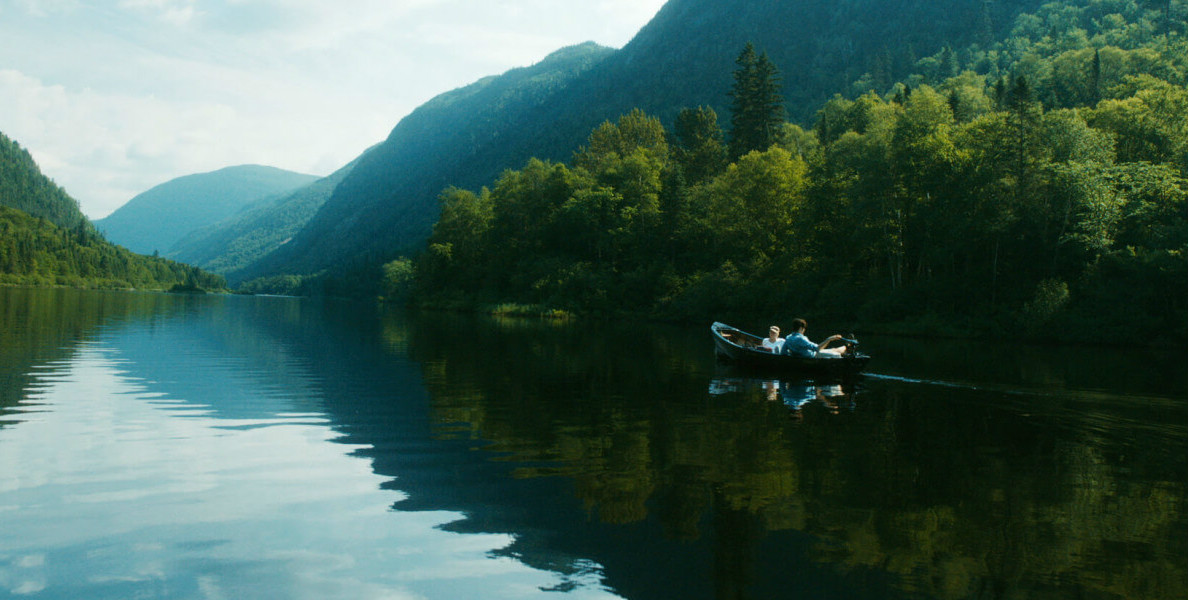An Eye For Beauty [2014], Quebecois Director Denys Arnand’s drama film tells the story of an affair that young architect Luc embarks upon during a troubled time in his marriage.
Coldly beautiful. Director Arnand truly has an eye for beauty, and the star of this film is the gorgeous location shooting that permeates every scene. Luc lives in and designs impeccable modern houses that punctuate the verdant Quebec landscape like alien relics, all polished glass and stained wood amidst the trees. The bulk of the story takes place over a single year, during which the audience is treated to countless shots of brilliant foliage and ships breaking through ice floes. Though these montages rarely signify anything other than the passage of time, they captivate in and of themselves.
Intimate detachment. The central episode of An Eye for Beauty is Luc (Éric Bruneau) meeting and subsequently beginning an affair with Lindsay (Melanie Merkosy) while his wife Stéphanie, an athletic soccer coach played by the lovely Mélanie Thierry, suffers from depression. The sex scenes have unusual clarity and perfectly capture the awkward passion of sudden, complete intimacy. Unfortunately, much of the interpersonal drama that takes place outside of coitus is alternately bland and tone-deaf, with characters either simmering silently or blankly stating their emotions without any subtext. A perfect example of this awkwardness comes with Lindsay’s efforts to seduce Luc: she simply states what she wants at every turn with no subtlety or flirtation, yet Luc does not react to her advances as if they are matter-of-fact. This may be a product of Lindsay being the only English-speaking character in an otherwise French-language film, but Merkosy and Bruneau's lack of chemistry when they have their clothes on certainly doesn’t help matters.
Correlation without causation. Apart from the affair, the film follows Luc and Stéphanie’s marriage through a period of increasing tension which ultimately results in their divorce (a fact that the film’s framing device spoils in the first scene). Importantly, though, his affair is something of a side story to that of Stéphanie’s growing depression, which is completely unrelated to Luc’s infidelity. As such, the film steers so far clear of being melodramatic that it veers into the opposite territory, granting the characters a strange detachment from one another that mirrors the impersonal sparseness of the buildings in which they live. The most arresting chapter in the film is a B-plot about the declining health of one of Luc’s longtime friends and coworkers: Arnand squeezes more emotion out of a pair of scenes in a hospital hallway and the old man’s house than he gets from the whole of his main story, which leaves the audience feeling as if we are outsiders looking in, unable to get a real grip on the characters with whom we are supposed to be sympathizing.
A measured gaze. An Eye for Beauty is an old man’s story about young love, and many of its tonal flaws can be excused as the rounding errors made by a wiser man looking back at a different time in his life. One of the film’s major themes is the double-sided nature of youth, how all that boundless energy tends to eat away at every aspect of one’s life unless it is channeled into healthy outlets. However, because it lacks any real conflict between characters to balance out the parasitic passion of its central story, An Eye for Beauty fails to gather steam and limps towards its inevitable conclusion. By the time, the film ends, you know the story but don’t feel as if you know the characters.
An Eye for Beauty is like one of Luc’s houses: beautiful, immaculately composed, yet lacking the human touch that allows art to reach across space and time and affect another soul.

Watch An Eye for Beauty Now
